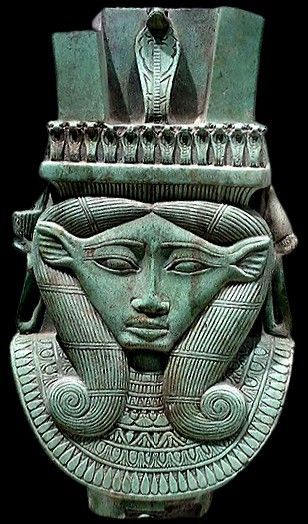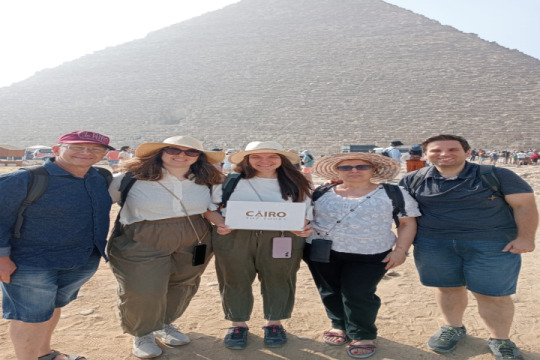#Sistrum fragment
Explore tagged Tumblr posts
Text

2 notes
·
View notes
Text
City of Emet Reemerges: Ancient Echoes from the Heart of Sharqia

In Egypt’s Sharqia Governorate, beneath the windswept soil of Tell El-Faraoun (Tell Nebasha), something extraordinary has surfaced. Archaeologists from the University of Manchester, leading a British-led excavation, have revealed the long-lost urban footprint of Emet—a forgotten settlement buried under centuries of silence.
Focusing on the eastern section of the mound, the team uncovered an unexpectedly dense configuration of mudbrick structures, pointing to a sophisticated, organized community dating as far back as the 4th century BCE. What set the discovery apart were the vertical tower dwellings, built with unusually thick foundations to sustain multiple stories. These living quarters, designed for extended families or large groups, reflect a residential design common across the Nile Delta during the twilight of the pharaonic era, extending into the time of Roman influence.
Closer to what is believed to have been a ritual quarter, archaeologists found a massive limestone platform and traces of monumental mudbrick columns, likely once coated in decorative plaster. These elements belonged to a structure set atop a ceremonial lane—one that had connected a sacred gateway from the late dynastic period to the once-honoured Temple of Wadjet. The pathway had apparently lost its sacred role by the height of the Ptolemaic age, revealing evolving ritual landscapes.
The Temple of Wadjet itself had seen reconstruction under Ramses II, again under Amasis II, and later was stripped and quarried during the Achaemenid occupation. Its layered construction speaks to centuries of shifting politics and devotional priorities.
Equally fascinating were the symbolic objects left behind. Among the highlights: a green faience ushabti, beautifully modeled in the style of the 26th Dynasty; a carved stone stele showing Horus standing atop crocodiles, grasping snakes with outstretched arms, crowned with the image of the dwarf deity Bes; and a finely crafted bronze sistrum, bearing the dual visages of the goddess Hathor, thought to originate from the final chapter of the late dynastic timeline.
These tangible fragments of the past serve as a vivid invitation to travellers today. To explore sites like Emet and countless others, modern adventurers can begin their journey with thoughtfully curated excursions such as the Egypt Day Tours, which open the door to tombs, temples, and historical landscapes across the country.
A broader expedition awaits those who embark on the all-encompassing Egypt Tours, crossing from bustling bazaars and pyramid fields to tranquil oases and coastal temples. Those who prefer to stay grounded in the capital can opt for Cairo Day Tours, where the spirit of ancient Memphis and medieval Cairo still lingers in the air.
Even as the sun sets, Cairo doesn’t rest. The iconic Sound and Light Show at the Giza Pyramids immerses visitors in myth and monument beneath the desert stars. For something quieter, a Nile River Felucca Cruise in Cairo for 2 hours offers timeless serenity, while the Nile Cruise Dinner in Cairo provides a luxurious floating feast with music, views, and elegance.
If your heart beats faster for adrenaline, the Quad Biking Desert Safari around the Pyramids delivers thrill and history at high speed, rolling across sands that once carried the feet of gods and kings.
Beyond Cairo, spiritual silence and raw nature await. The 2-Day Tour to Sinai Mountain and St. Catherine’s blends sacred mountaintops with ancient monasteries. For those curious about Egypt’s environmental beauty, the El Fayoum and Wadi El Rayan Tour showcases desert lakes, waterfalls, and a fossil-rich terrain older than civilization itself.
Step into spiritual seclusion with the Day Tour to Wadi El Natroun Monasteries—a journey through Egypt’s Christian heritage preserved in ancient stone. To see the religious unity of cultures, the Coptic and Islamic Cairo Tour offers a living canvas of prayer, art, and architectural marvel.
From buried cities to starlit pyramids, Egypt is not just a destination—it’s a timeless world awaiting rediscovery.
0 notes
Text
Introduction to my new world (AGAIN!!!)
Hiiii!! These past few months i've been slowly chipping away at making another world, this time based off of bronze age mediterranean civilizations.(but mostly minoan/etruscan with some classical greco-roman influences) Right now i dont have a proper name for it but i'm calling it Mediterranea as a placeholder :)
Lots of credit to Massimiliano Haematinon (on instagram as haematinon, or his main world site at https://fragmentsofthepast.dev9k.com) for my main inspiration for this world!!!
Mediterranea mainly focuses on a large sea, about the size of the Mediterranean Sea, with many scattered islands in the middle of it. To the east are the Eastern Lands, an important trade partner for high-quality gold, while the Northern Lands to the north are a important source of tin.
For the religion, i tried to make a larger pantheon compared to the triads i usually make. The few deities i've spent the most time are:
Anapha, the god of fish, wheels, the noontime sun and oil, born to his mother Phanionai on the island of Auinasa. He's based off of Apollo, and bears the solar lamp and disc as his main symbols.
Igosli, the deity of mirrors, festivities, the mind and birds. Often depicted holding a golden sistrum and famed for his broken mirror, which shattered his mind into two distinct moods: just and cruel, and delirious but joyful. Obviously, he is based off of Dionysus.
Linas, the goddess of fire, choices, exchanges, cloth and agility. She is often shown to stand at crossroads, offering the occasional pedestrian a choice.
Minsos, one of the more important gods in Meditteranea. They is the god of oceans, cities, exploration and the moon, and the patron of fishermen and people who travel by boat. They were born fully grown after the arrow of Phariya, goddess of the hunt, struck open the divine mountain made of the semen of the Divine Fish.
Nalosus, deity of hiding, major roads, the dead, knowledge and the soil. One of their personas is the Nalosus the Gravedigger, a woman wearing the traditional outfit of a gravedigger: a wide-brimmed hat to protect from the sun, long-sleeved gloves and trousers to avoid mud and soil from making the hands and legs dirty.
As for locations, this world's largest city so far is the city of Amnaga, also called "the City of Three Ports". Instrumental in trade with the Eastern Lands and southern Mediterranea, it quickly rose to power.
Other cities i've worldbuilt so far include Soliyos, the old capital before Amnaga took over trade, Igaphagiana, a centre for the cult of Amnaga and a copper-mining city, Koganaso, another cult center, famed for being the place where Minsos washed ashore, and Amu, an island mining town where marble and limestone, believed to be solidified semen from the Divine Mountain, is mined.
Im excited to share this new world with you guys :)) im also hoping to entirely rework the older worlds i've done, and to post them here!
1 note
·
View note
Text

Fragment of a sistrum shaped as Hathor’s head
Medium: Faience
Egypt, 688-525 BC, Saite period
#ancient egypt#instruments#sistrum#hathor#ancient history#history#egyptian mythology#egyptian hieroglyphs#egyptian gods#egyptian afterlife#egyptian art#egyptology
387 notes
·
View notes
Photo

: • Museo Archeologico Nazionale dell’Umbria, Perugia [ Archaeological Museum in Perugia | MANU ] @museoarcheologicoumbria Tue 17|08 • PART 2 Selected phonecam snaps | Brief overview: . • 1: Fragmented bronze chariot decoration ['coating'] with Griffin Ca 560 BC. From San Mariano [near Perugia] . • 2: Antefix, Female head in phrygian cap, 375-350 BC. From Orvieto, The Belvedere Temple. . • 3: Bronze fragment of Clipeus [shield] - Isis holding Sistrum, crescent moon on her head 2 AD. From Castello delle Forme [near Perugia] . • 4-5: Attic & Etruscan pottery and armour room: - Krater by the Niobid Painter, 350-325 BC., - Stamnos attributed to the Polygnotos Group, 450-440 BC., - Amphora attributed to the Perugia Painter, 380 BC. . • 6-9: - Puteal with Amazonomachy, Details, 1 AD. Marble From Farfa [ Rome | Terni], - Dionysus Sarcophagus, End of the 2nd | 3rd BC. Marble . • 10: 1st floor view. . MANU | MSP | 17|08|21 Mobile | Part 2 Photographed objects is the property of MANU and subject to the Museum copyright. All labels & descriptions ©MANU . Selected Hires | HD artistic phs will follow. . . #perugia #umbria #manu #archaeologicalmuseum #museoarcheologico #ancientart #etruscanplaces #etruschi #etruscans #etruscan #etruria #roman #attica #ancient #vasepainting #ancientpottery #ancientceramics #architectonic #ancientsculpture #funeraryart #excavations #archeologia #antiquity #arthistory #museology #mythology #heritage #museumphotography #archaeologyphotography #michaelsvetbird manu @museoarcheologicoumbria 17|08|21 phs©msp @michael_svetbird | part 2. (at Museo Archeologico Nazionale dell'Umbria - Pagina Istituzionale) https://www.instagram.com/p/CS_YGvxInAa/?utm_medium=tumblr
#perugia#umbria#manu#archaeologicalmuseum#museoarcheologico#ancientart#etruscanplaces#etruschi#etruscans#etruscan#etruria#roman#attica#ancient#vasepainting#ancientpottery#ancientceramics#architectonic#ancientsculpture#funeraryart#excavations#archeologia#antiquity#arthistory#museology#mythology#heritage#museumphotography#archaeologyphotography#michaelsvetbird
17 notes
·
View notes
Photo

Sistrum Handle Fragment, ca. 945-712 B.C.E., Brooklyn Museum: Egyptian, Classical, Ancient Near Eastern Art
Size: 1 5/16 x 1 1/8 x 1 1/8 in. (3.4 x 2.9 x 2.9 cm) Medium: Lapis lazuli
https://www.brooklynmuseum.org/opencollection/objects/56825
6 notes
·
View notes
Text
Also I'd like it on record that the middle drawing there, the one of the fragment of fayence sistrum handle, took an entire weekend to draw because shading can only be done with dots. It had to be drawn on drafters film, meaning a single absent-minded sweep of the hand could send hundreds of tiny dots to smeared oblivion. The pen I used had a nib of 0.05, used with soul-breaking precision to avoid 'tadpoles', or dots with a slight tail to them. It was summer, it was hot, and I spent days sealed in my grotty room in halls making thousands of tiny, minuscule dots. It all had to be perfectly to scale too, if I needed to rub anything out I had to use the tip of an exactoknife, but not press too hard lest I scratch the film.
And where is it now? The original is in a folder tucked between two cabinets in my flat. The printed version is in my submitted portfolio in some remote, uncharted corner of the library stacks in Durham, England, likely to be never viewed by another soul again.
Help.
I do find it hilarious that my only official training in drawing was to draw technical diagrams, viz.:



And now I use those skills to draw goofy pictures about monster girls
Masters degree successfully utilised
11 notes
·
View notes
Photo

Sistrum fragment in the shape of a Hathor head, Egyptian Art
Medium: Faience
Purchase, Edward S. Harkness Gift, 1926 Metropolitan Museum of Art, New York, NY
http://www.metmuseum.org/art/collection/search/548330
3 notes
·
View notes
Photo

Fragment of a Sistrum, ca. 664 B.C.E.-305 B.C.E., Brooklyn Museum: Egyptian, Classical, Ancient Near Eastern Art
Upper portion of a light blue-green glazed faience sistrum. Preserved is the double Hathor head flanked by uraei and the shrine-shaped extension above each with is now missing the rattles meant to be attached to the three pairs of holes. Condition: Chip visible lower left through aegis; minor chips in aegis. Nose much damaged, probably in firing. Eye also damaged during firing. Other chips. Size: 7 1/2 x 2 13/16 x 1 3/4 in. (19.1 x 7.1 x 4.4 cm) Medium: Faience
https://www.brooklynmuseum.org/opencollection/objects/116993
1 note
·
View note